A guide for better water, and much better coffee

If you had to list the three most important things you need to make a great cup of coffee, what would you guess? Great whole bean coffee from a local roaster? A quality grinder? An intricate tattoo of a coffee tree on your forearm?
While we’d definitely recommend two of the above (we’ll leave it up to you to guess which), we find one of the most important aspects often goes overlooked: water.
But all water’s pretty much the same right? After all, it’s water.
Not quite. It turns out that water can be dramatically different depending on its source, how it’s filtered, and much more. Even the age of the pipes in your neighborhood can affect your water quality.
And that cup of coffee you drank this morning? It’s roughly 98% water.
Let’s put it another way: brewing great coffee without paying attention to your water is sort of like paying top dollar for a burger that’s made of 2% Kobe beef and 98% mystery meat; it might be great, it might terrible, but it definitely won’t be what you paid for.
So how do you make sure your water can keep up with your amazing coffee set-up? It’s easier than you think.

First, a quick primer on two important water terms: Hardness and Filtration.
Water hardness refers to the amount of calcium and magnesium that’s in the water. As water makes it way through the water cycle (remember 5th grade science class?), it picks up minerals from the soil and rocks.
Filtration, on the other hand, is the process of removing some of the stuff that is floating around in your water. There are a lot of different filtration systems out there, but most home filtration systems will remove things like chlorine, odors, and color as well as any small particles floating around in the water. Generally, filtration doesn’t do much to affect the hardness of your water.
When it comes to coffee, you want clean, filtered water, with a little hardness to bring out the best flavors.
Think of water hardness like salt. Without any salt, your food tastes flat and bland; too much, and it’s all you’ll taste. Without any hardness in your water, your coffee will lack dimension and flavor; with too much, your coffee will tasty muddy. Even worse, if your water is too hard, mineral deposits can form inside your brewer and cause lasting damage.
How do you improve your water at home? Here are three easy ways:
- Test your tap water. It’s a good idea to get a general sense of where your water is. To test your water, buy a pack of water hardness test strips. These strips will show you how hard your water is in terms of its degrees of hardness (DH) or in grains per gallon (GPG). For coffee, your water should be between 1-6 DH/GPG. Bonus tip: Remember to use room temperature water when you test, as hot and cold water can change the results of the test strip.
- Try a filter pitcher. While most filters won’t do much to affect hardness, they will help remove any of those extra floaters and compounds which can muddy up your coffee. We love the the Soma filter system.
- Buy filtered bottled water. If your water is very hard (meaning more than 10 DH), then you may want to consider picking up an extra gallon at the grocery. Look for bottles labeled as “spring” or “drinking” water. Avoid “pure” water like distilled or reverse osmosis water, because they lack key minerals and may cause issues with your brewer.
Extra mile: If you want to go a little further in your pursuit of great water, consider picking up a pack of Third Wave Water. These are small mineral packets you add to a gallon of “pure” water to hit the ideal composition for excellent coffee. (For the very patient: Our friends at Colonna Coffee in the UK are working on Peak, a new gravity-fed water filter that is currently in development. Stay tuned!)

This guest post was written by our friend Brian Ensminger
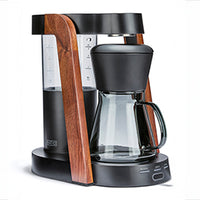 Ratio Eight S2
Ratio Eight S2
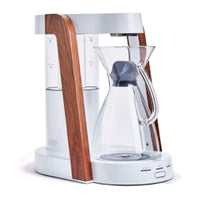 Ratio Eight Original
Ratio Eight Original
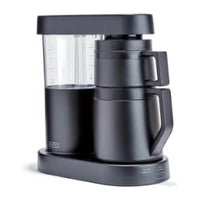 Ratio Six
Ratio Six
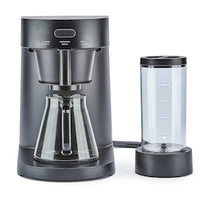 Ratio Four
Ratio Four
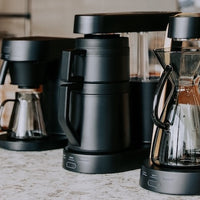 Compare Machines
Compare Machines






